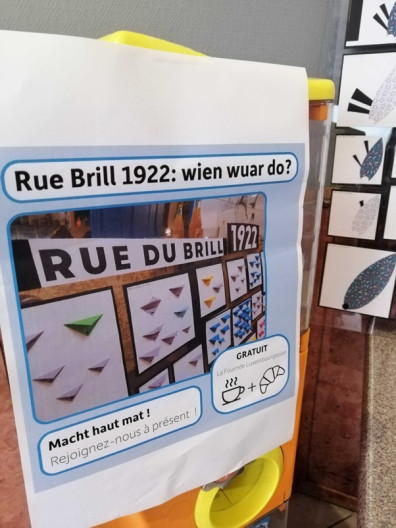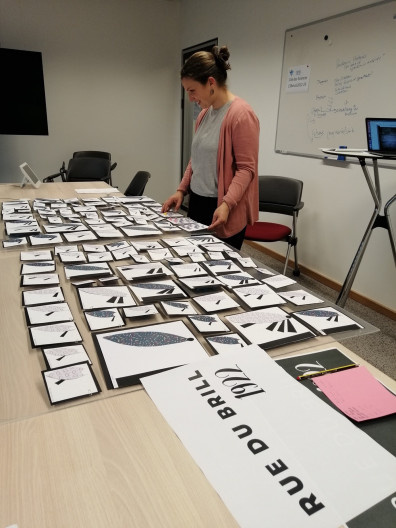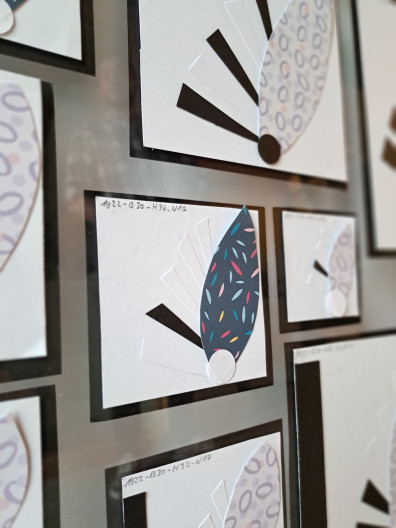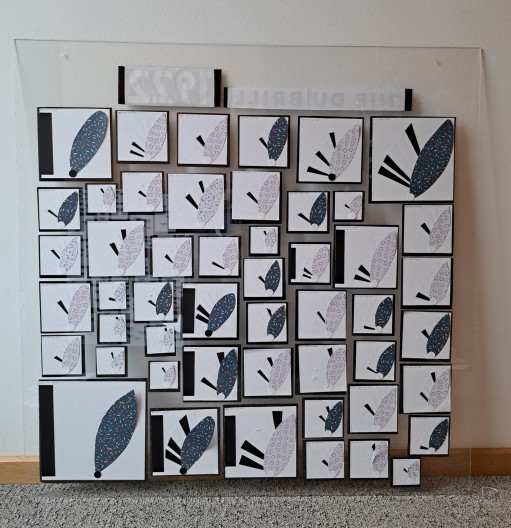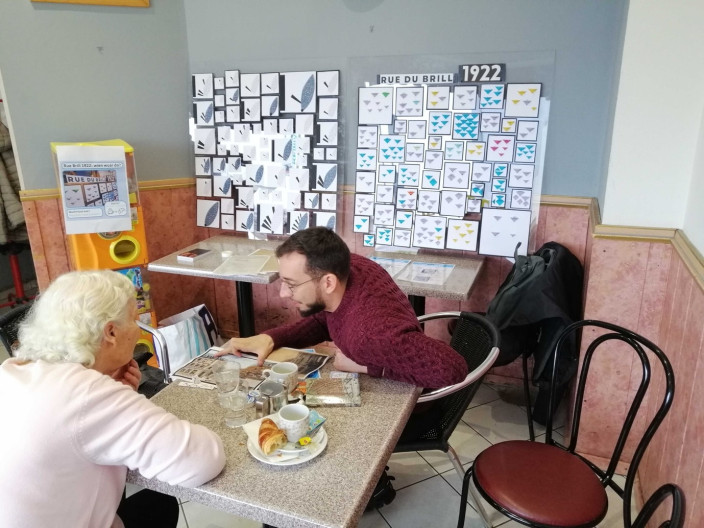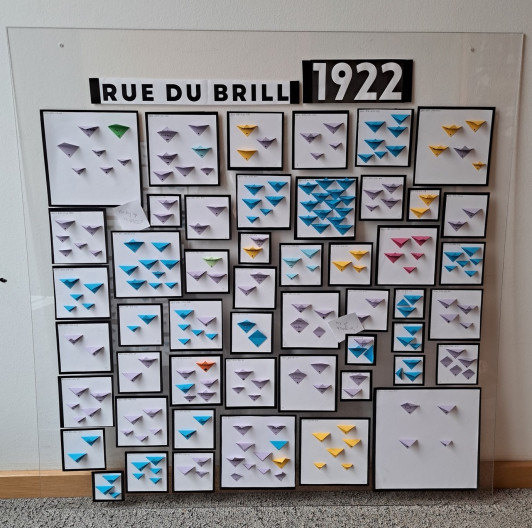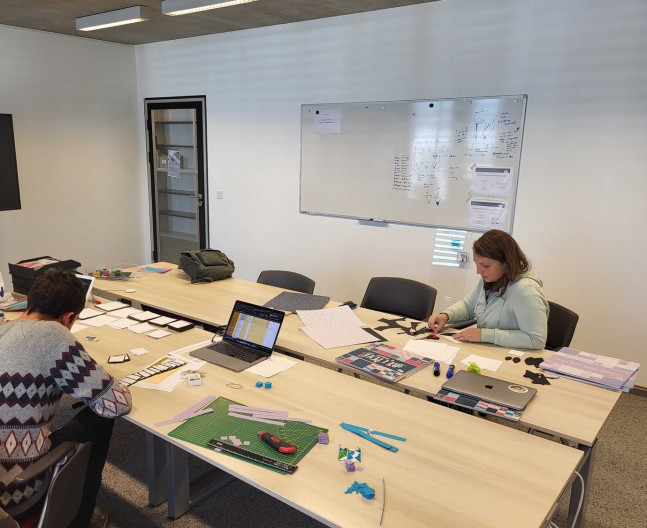The physicalization of data (i.e. physical representation of data) offers new ways to collect, explore and perceive historical data. Using historical census data, we ventured into the physicalization of 100 households and almost 500 people living on Brill Street in 1922. This Thinkering project draws upon Daniel Richter’s knowledge about the local history of Esch-sur-Alzette, Aida Horaniet Ibanez’s expertise in data visualization, and Joëlla van Donkersgoed’s experience in public engagement.
We wanted current residents to engage with historical data about their neighborhood in a creative and playful way. For that purpose, we designed a data physicalization without statistical graphs that people of all ages could understand and recreate with simple materials such as paper, scissors, and glue—no computers, no QR codes, and no internet access required. It also led to conversations that helped us (the historians and data visualization researchers) to discover details not shown in the raw data but known to the people living in the same neighborhood today.
Besides public outreach, our aim was to gain a better understanding of how data physicalization can influence data collection and information retrieval in the context of public history. Moreover, we have used this project to experiment with different modes and places to meet and interact with the public, which will inform best practices for future public outreach projects in Esch-sur-Alzette.
Read the full article in Nightingale - Journal of the Data Visualization Society.



